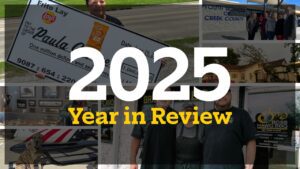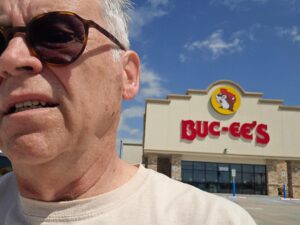Submitted by Stephen R. Collins
For far too long, Sapulpa has been an overlooked corner of the Tulsa Metro Area. While the surrounding suburbs have flourished and grown exponentially, Sapulpa has traditionally shunned large scale growth and change. We have many great citizens and leaders who work tirelessly to improve this city and bring in new businesses, but their efforts will be in vain if we cannot boost the standing of this community. On January 14th, the citizens of Sapulpa will be presented with a rare opportunity to enact a slew of large scale city-wide improvements that will have lasting effects on improving the attractiveness, quality of life, and public safety of this great city.

This is not merely a matter of spurring growth for growth’s sake. As the rest of the metro moves forward, Sapulpa is in danger of sliding backwards into being a largely undesirable area of the metro. I do not have space in this short editorial to discuss each proposition in detail, but I would like to highlight at least a few major benefits of these propositions.
Our community has trouble attracting new families because the surrounding suburbs are able to offer so much more in terms of amenities and quality of life for young families. Propositions 3 and 6 specifically target our parks, including the ongoing development of the Sapulpa Youth Sports Complex. The parks department has made some great strides recently with park equipment and trails (also thanks to Sapulpa Rotary), but the issue of having enough ball fields for community recreational sports leagues is a legitimate problem. It is ridiculous for Sapulpa families to potentially need to send their children to other towns to play in youth sports. On this same note, proposition 5 would fund a complete rebuild of our incredibly valuable Booker T. Washington Recreation Center into a new facility that would be the envy of any community in the metro.
For a town that prides itself on our fabulous stretch of Route 66, it is dismaying to see one of our most prized Route 66 landmarks, the Rock Creek Bridge, continuously in danger of being lost forever. The bridge has been hit by vehicles several times in the recent past, raising questions about how long it will be structurally sound if it remains open to traffic. Proposition 1 would provide a new road from highway 66 to Ozark Trail Road, allowing the Rock Creek Bridge to be closed to traffic and preserved for future generations. Proposition 1 will also fund a new signalized intersection at highway 117 and 49th West Avenue, which has become a dangerous and congested section of roadway.
Our historic, well-preserved downtown is what I consider to be our crown jewel, but if we wish to come close to the success of downtown Broken Arrow or many other revitalized urban cores, we need to get serious about investing in the infrastructure to attract and sustain growth. Proposition 1 would provide a downtown streets improvement package that would make the area much more attractive to businesses. These improvements would amplify the effect of several recent downtown developments and create momentum towards bringing in more investment to the area. I know of at least one major property owner who is in need of stormwater improvements in the streets around her buildings before she can confidently invest in a major build-out.
Some will wring their hands at the proposed increases in property tax that come with each respective proposal, but the costs are trivial compared to what we stand to gain. Property taxes vary based on property values, but the average increase to Sapulpa property owners will be in the neighborhood of five dollars per month if all propositions are approved. For some property owners, this cost could be offset by the improvements in the town’s ISO rating imparted by the public safety improvements of proposition 2, which would lower home insurance costs. It is also probable that the benefits imparted by these bond issues will raise property values throughout the city.
The status quo has not been kind to Sapulpa. As our neighbors continue to flourish, the disparity between their communities and ours will only grow worse if we do not take action to improve our city.








